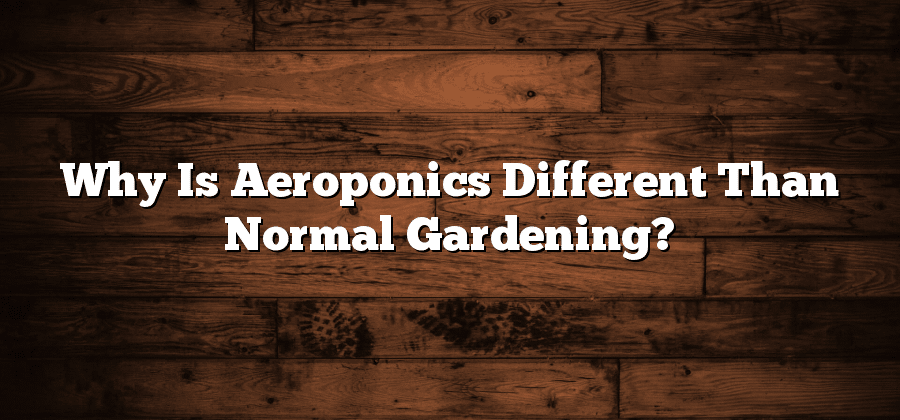Growth Medium: Exploring Alternatives to Soil
When it comes to cultivating plants, soil has long been the go-to growth medium. However, as technology and advancements in agriculture continue to progress, alternative growth mediums are emerging as viable options. These alternatives offer unique benefits and have the potential to revolutionize the way we grow plants.
One such alternative to soil is hydroponics. In hydroponics, plants are grown in a nutrient-rich water solution, without the use of soil. This method allows for precise control over the plants’ nutrient intake and eliminates the risk of soil-borne diseases. Hydroponics also conserves water, as the nutrient solution can be recycled, reducing waste. Additionally, plants grown hydroponically tend to grow faster and produce higher yields compared to traditional soil-grown counterparts. This makes hydroponics an attractive option for commercial growers looking to maximize efficiency and productivity.
Nutrient Delivery: Unveiling the Power of Mist
The way nutrients are delivered to plants plays a crucial role in their growth and development. In traditional soil cultivation systems, the nutrients are typically delivered through the soil, allowing the plants’ roots to absorb them. However, there is a growing interest in exploring alternative methods of nutrient delivery, with one particularly promising approach being the use of mist.
Mist nutrient delivery, also known as aeroponics, involves spraying a fine mist of nutrient-rich solution directly onto the plant’s roots. This method offers several advantages over traditional soil cultivation. Firstly, the mist allows for a more efficient and targeted delivery of nutrients, ensuring that the plants receive the optimal amount they need. This precision reduces waste and prevents the build-up of excess nutrients that can be harmful to the plants. Additionally, mist nutrient delivery promotes effective nutrient absorption by maintaining a high level of oxygenation around the roots, leading to healthier and more robust plant growth. It’s no wonder that this innovative technique is rapidly gaining popularity among growers looking to maximize nutrient delivery efficiency.
Water Conservation: Maximizing Efficiency in Aeroponics
Aeroponics, a hydroponic cultivation technique, has caught the attention of many researchers and growers due to its remarkable water conservation capabilities. Unlike traditional soil-based farming, aeroponics eliminates the need for large volumes of water. In this innovative system, plants are grown in a misting environment, where their roots are suspended in air and misted with a nutrient-rich solution. This method ensures that plants receive only the water they need, reducing waste and maximizing efficiency. By minimizing water usage, aeroponics offers a sustainable solution for water conservation in agriculture.
One of the key advantages of aeroponics is its ability to significantly reduce water runoff. In traditional soil-based farming, excess water often seeps into the ground, carrying nutrients and pesticides with it, contaminating nearby water sources. In contrast, in an aeroponic system, water usage is tightly controlled, preventing any unnecessary runoff. Additionally, the misting approach ensures that water is efficiently utilized by the plants, as the fine droplets provide better coverage and absorption. This precise delivery method not only conserves water but also minimizes the need for fertilizers, further reducing the environmental impact.
Plant Health: Analyzing the Impact of Improved Oxygenation
Plant health is a crucial aspect of successful aeroponic systems, and one factor that greatly influences it is the level of oxygenation. Improved oxygenation in aeroponics has shown significant positive impacts on plant growth and overall health. When plants are exposed to higher levels of oxygen in their root zones, their root development is enhanced, leading to stronger, more robust plants.
Additionally, increased oxygenation in the root zone helps prevent the buildup of harmful bacteria and pathogens that can cause diseases. With a well-oxygenated environment, plants are better equipped to absorb nutrients and water efficiently, leading to optimal growth. This improved oxygenation also aids in the overall vitality of the plants, making them more resilient to environmental stressors and enhancing their ability to perform photosynthesis effectively.
In conclusion, analyzing the impact of improved oxygenation on plant health in aeroponics is vital for maximizing productivity and ensuring the success of these systems. By providing plants with a well-oxygenated environment, we can promote strong root development, nutrient absorption, and overall plant vitality, resulting in healthier, more productive crops.
Pest Control: A Look at Natural Strategies in Aeroponics
One of the key advantages of aeroponics is its ability to implement natural pest control strategies. By eliminating the need for soil and traditional gardening practices, aeroponics reduces the risk of common pests and diseases. However, even in this controlled environment, precautions must be taken to prevent any potential infestations.
One natural strategy used in aeroponics is the introduction of beneficial insects. These insects, such as ladybugs or lacewings, can feed on harmful pests like aphids or spider mites. By introducing them into the aeroponic system, they can help maintain the balance of pests and significantly reduce or eliminate the need for chemical pesticides. Additionally, the use of physical barriers, such as fine mesh nets, can prevent pests from entering the system while still allowing air and nutrient exchange. This approach not only minimizes the risk of pests but also ensures that the plants can thrive in a healthy and sustainable environment.






